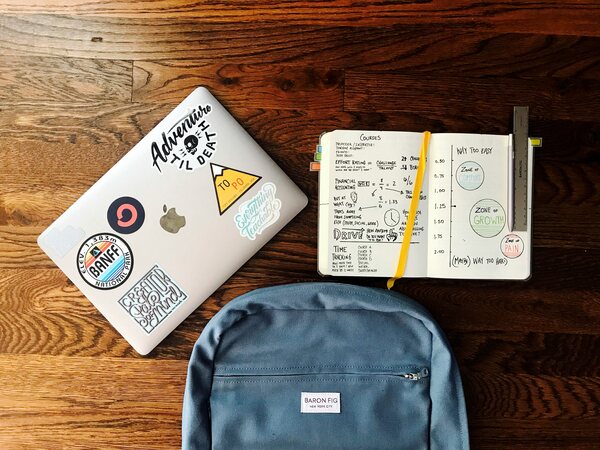Comparing Academic Programs: A Guide to Finding the Best Fit for Your Career Goals
Choosing the right academic program is pivotal for your career success. This guide will help you compare and select the best programs aligned with your professional ambitions. It’s more than just selecting a major or a campus; it’s about finding a place where you will grow academically, socially, and personally.
Understanding Career Goals
Before diving into program comparisons, clearly define your career objectives. Consider the roles you are interested in and the industries you prefer. Research the qualifications required for these positions and the career paths of professionals you admire.
This understanding will serve as a foundation for evaluating academic programs, ensuring they align with your long-term goals. If your aspirations require broad knowledge and diverse skills, programs offering a multidisciplinary approach should be prioritized.
Accreditation and Reputation
When comparing academic programs, consider the accreditation and reputation of the institution, especially if you are looking at a 4 year university. Accreditation ensures that the education provided meets certain standards important for future employers and your professional credibility.
Additionally, the reputation of a university can significantly impact your degree’s value and your job prospects post-graduation. Researching how graduates of these programs fare in the job market can provide crucial insights into the effectiveness of the education and training provided.
Curriculum Content and Structure
Analyze the curriculum content and structure of the programs you’re considering. Look for curricula that are up-to-date with current industry standards and technologies. Check if they offer practical experience through internships, co-op programs, or hands-on projects, which are invaluable for applying classroom knowledge in real-world scenarios.
Moreover, consider the flexibility of the program: Does it allow for electives or specialization areas that interest you? A program that aligns well with your career interests will more likely keep you engaged and motivated.
Faculty Expertise and Resources
The quality of faculty and resources available can greatly influence your learning experience and professional development. Look into the qualifications and research areas of the faculty members. Faculty who are respected experts in their fields or have extensive industry connections can enhance your learning through insights drawn from their professional experiences and networks. Also, review the resources available, such as laboratories, libraries, and technical support, which are crucial for supporting your studies and research.
Class Size and Student-to-Faculty Ratio
Smaller class sizes and a favorable student-to-faculty ratio can enhance your educational experience by allowing for more personalized attention and better access to faculty. In smaller classes, there’s often more scope for discussion and interaction, which can be particularly beneficial in complex subject areas. Research and compare the average class size and the student-to-faculty ratio of each program as these factors can significantly affect the quality of your education and your ability to network effectively within your academic community.
Alumni Success and Networking Opportunities
Investigating the success of alumni can provide a practical perspective on the effectiveness of an academic program. Look for programs where graduates have moved into roles or industries you aspire to join. Additionally, consider the strength of the alumni network, as it can be a valuable resource for mentorship, advice, and job opportunities post-graduation.
Universities often facilitate alumni-student interactions through events, seminars, and online platforms, enhancing your networking capabilities and providing insights into the professional world.
Extracurricular Activities and Professional Development
Extracurricular activities are not only a means to enrich your university experience but also a way to develop additional skills that employers value. Assess programs that offer professional clubs, student organizations, and leadership development programs. Participation in these can improve soft skills such as leadership, teamwork, and communication. Moreover, some schools host job fairs and workshops with industry professionals, which are instrumental in building professional networks and gaining industry insights.
Impact of University Location
The location of the university can significantly impact your academic experience and career prospects. Urban campuses often provide greater internship and employment opportunities due to their proximity to industry hubs. Conversely, institutions located in quieter, suburban areas may offer fewer direct industry connections but often foster a tight-knit community and focused study environment.
Consider your personal preference for a study environment and your professional needs when evaluating the impact of location on your education.
Financial Considerations
An often decisive factor in choosing an academic program is the cost of education, which includes tuition, fees, accommodation, and other living expenses. Access the percentage you are able to pay from your own savings or future earnings before the tuition due date. Look into financial aid and scholarship opportunities available that can ease the financial burden.
Furthermore, some programs might offer paid co-op positions or assistantships that not only provide financial relief but also enhance your professional experience. Understanding the full financial commitment required will help you make a more informed decision.
Comparing Delivery Methods
In today’s educational landscape, many programs offer various delivery methods, from traditional on-campus courses to fully online formats or a hybrid of both. Consider how different modes of delivery align with your learning preferences and life commitments. For instance, an online master of social work degree program might offer more flexibility and allow you to balance work and study more effectively, which could be crucial if you are working alongside your studies.
Conclusion
Choosing the right academic program is a crucial decision that requires thorough research and careful consideration of many factors. From understanding your career goals and the program’s curriculum to evaluating extracurricular opportunities and the potential financial impact, every aspect plays a significant role in shaping your educational journey and future career.
By methodically comparing your options and aligning them with your personal and professional aspirations, you can select a program that not only meets your educational needs but also sets you on a path to success in your chosen field.
Remember, the best fit is one that not only promises academic excellence but also supports your overall growth and development as a future professional.
Explore innovative careers human resource accounting.









